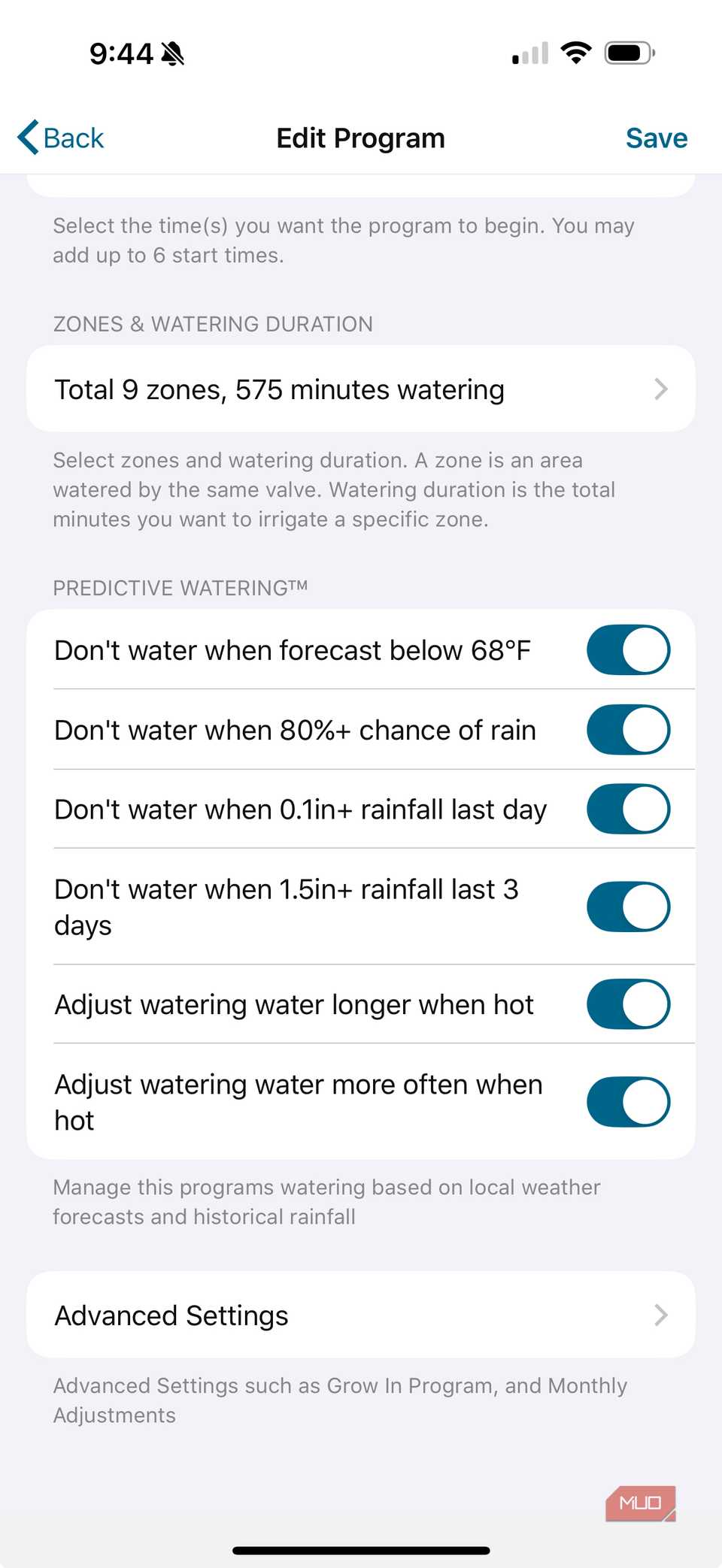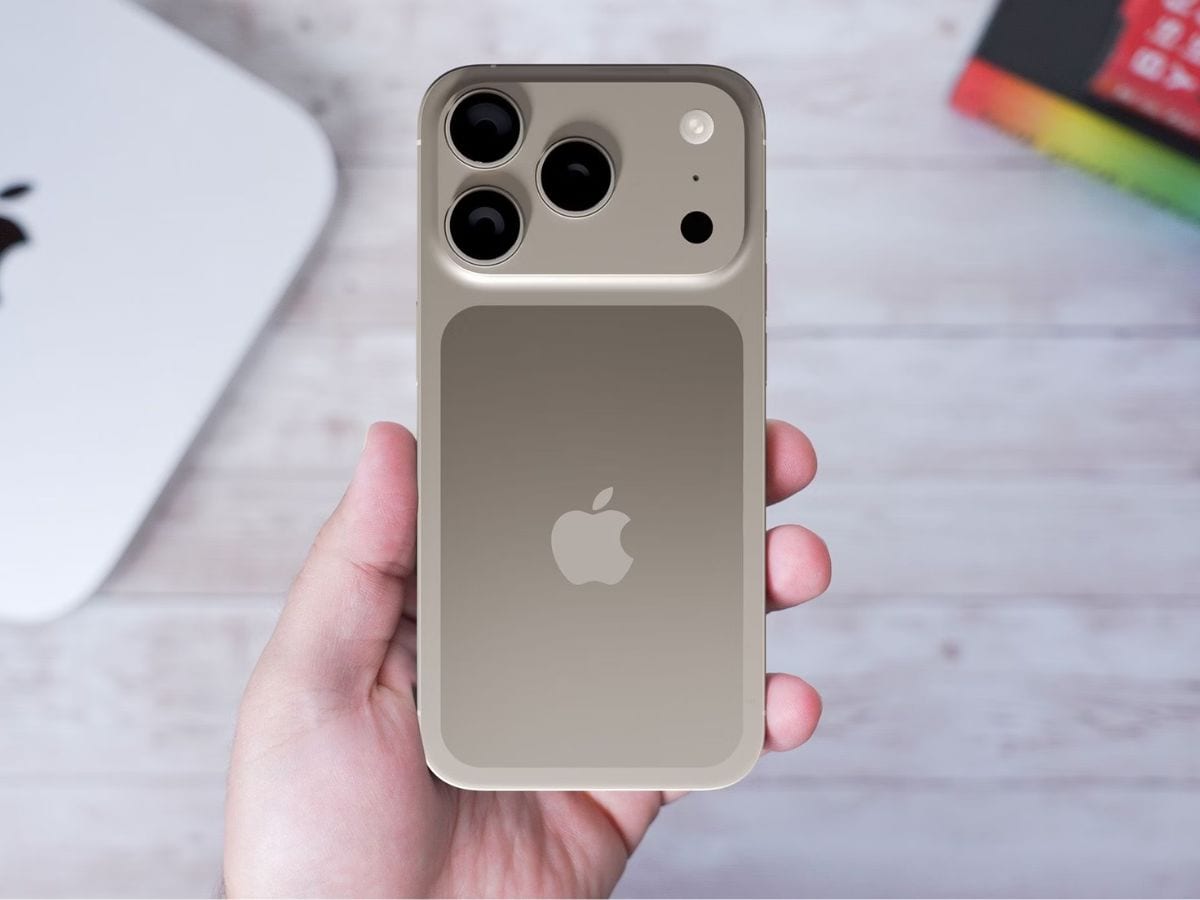Before I upgraded my sprinkler system, watering my yard was expensive and frustrating. I’d water too much when it rained, forget to adjust timers, and watch my electric bills climb higher each month. After adding a Wi-Fi module to automate everything, I’m saving $50 a month, and my grass looks better than it ever has.
My expensive watering mistakes were costing me hundreds
When I moved into my new home, my builder had already installed a Hunter Hydrawise sprinkler controller. Coming from a house where I watered with a hose and sprinkler attachment, I thought having an automated system would solve all my watering problems.
I was wrong. The basic controller only allowed programming through the physical unit in my garage, which meant setting fixed schedules and hoping for the best.
My 2.5-acre yard in northern Indiana has nine irrigation zones, and since I’m on well water, every gallon pumped shows up directly on my electric bill. I’d program the sprinklers for what seemed reasonable, then forget to adjust them as the weather changed. During wet weeks, I’d waste money overwatering already-saturated soil. During dry spells, I’d notice brown patches and scramble to increase watering times.
The worst part was running sprinklers at inefficient times. I’d set them to run at 8 PM, which worked great for grass health, but then I completely forgot to adjust the schedules when rain was forecasted.
My summer electric bills were so high—between air conditioning and constantly running well pumps—that I wanted to find every way I could to decrease usage. I knew something had to change.
I spent some time looking into smart options and ended up buying the Hunter Hydrawise Wi-Fi module for around $100. It’s a little box that slides into your existing controller so you can control everything from your phone through Wi-Fi.
Getting it set up should have been simple, but my garage was too far from the router for a stable connection. I’d already planned to add a Wi-Fi access point in the garage for other projects, so I installed one and the connection became rock-solid. If you also have this issue, mesh Wi-Fi and extenders are two solutions worth considering.
The difference was immediate. Once connected, the app gave me control over everything—checking soil conditions, watching weather updates, and adjusting zones—even from bed. The biggest change was shifting all my watering to nighttime hours when electricity costs less and the grass better uses water.
After the first month with app control, my electric bill dropped $25. I was manually checking the weather and adjusting schedules, but even that basic improvement made a significant impact.
Smart features doubled my savings
The real magic happened when I enabled Hydrawise’s Predictive Watering features. These automated systems use local weather data and soil conditions to make watering decisions without any input from me.

I enabled all the available options:
- Don’t water when forecast below 68°F: Cool temperatures mean less evaporation and lower water demand.
- Don’t water when 80%+ chance of rain: Prevents watering when storms are likely.
- Don’t water when 0.1in+ rainfall last day: Prevents watering already-moist soil.
- Don’t water when 1.5in+ rainfall last 3 days: Accounts for cumulative moisture over several days.
- Adjust watering duration when hot: Automatically extends watering time during heat waves.
- Adjust watering frequency when hot: Increases the count of watering cycles during extended heat.
Occasionally, I disable the 80%+ rain chance and multi-day rainfall settings, since they are sometimes too aggressive for my area’s unpredictable weather patterns. The other three I keep enabled year-round; they have the biggest impact.
Within another month, my electric bill dropped an additional $25. The system was making dozens of micro-adjustments I never would have thought to make manually. During a week with scattered afternoon showers, it would skip watering zones that received natural irrigation while maintaining others that stayed dry.
My lawn became noticeably healthier, too. Even watering overnight meant less evaporation and better root development. No more brown patches from underwatering or fungal issues from oversaturated soil.
Your savings will vary
My $50 monthly savings come from specific circumstances. Well water means every gallon pumped directly impacts my electric bill. If you’re on city water, you’ll see savings on your water bill instead of electricity.
Yard size matters significantly. My 2.5 acres with nine zones provide plenty of opportunity for optimization. Smaller yards will see proportionally smaller but still meaningful savings. Local utility rates affect potential savings, too. Northern Indiana has moderate electric rates, but areas with expensive water or higher electric costs could see even better returns.
The key is that smart irrigation, like many budget-friendly smart home gadgets, pays for itself quickly regardless of your situation. Even conservative water savings of 20-30% translate to real money over irrigation season.
Planning my next upgrade
I’m going to add a rain sensor next summer for even more optimization. While Predictive Watering uses forecast data, a physical rain sensor provides real-time precipitation measurements at the exact location.
This should eliminate the few remaining instances where sprinklers run during or right after unexpected showers. I expect another 10-15% reduction in water usage, which means additional monthly savings.
Smart irrigation has transformed my yard care from a constant worry into a set-and-forget system. That $100 investment paid for itself in about two months, and the automated features doubled what I was already saving. If you’re stuck with high water bills or running well pumps constantly, letting the system adjust itself based on actual conditions beats trying to guess what your yard needs.










